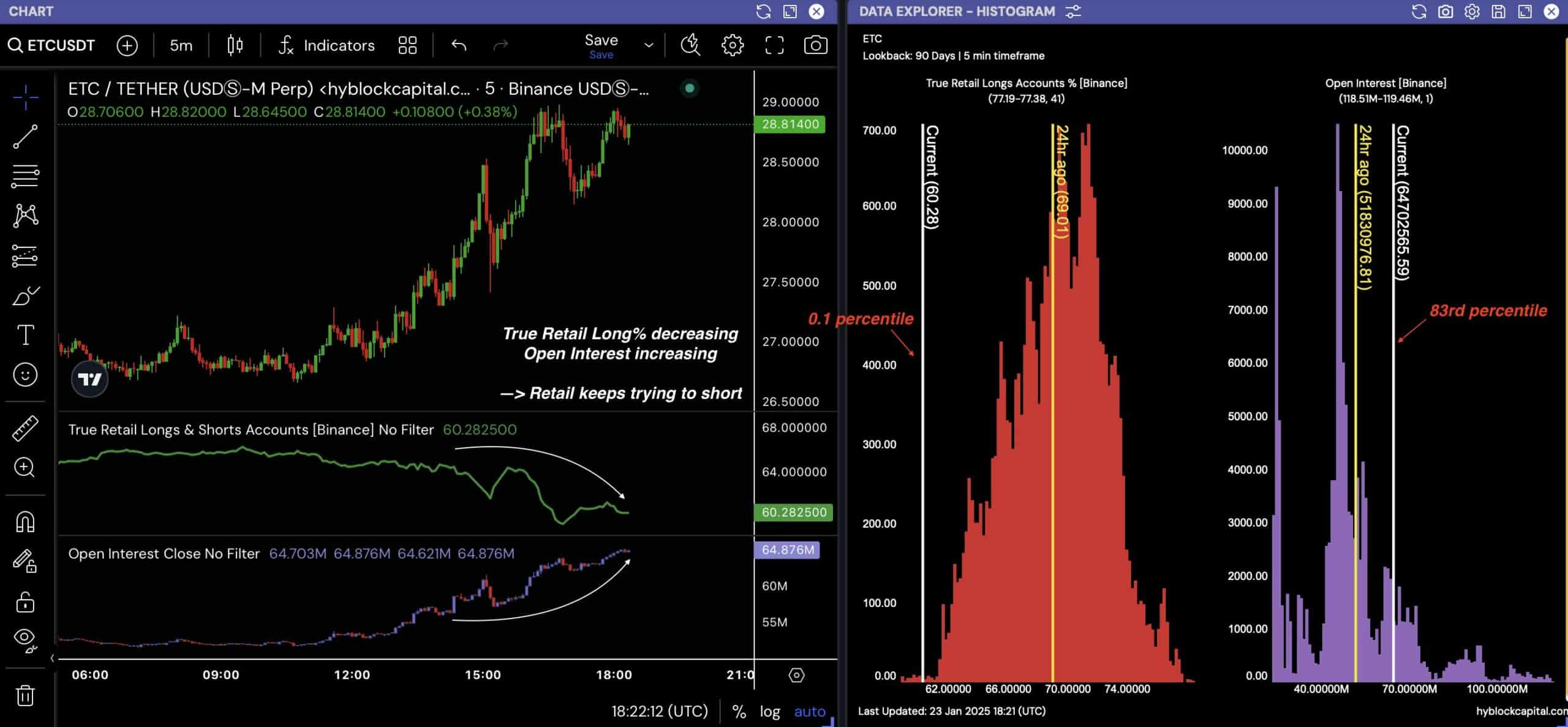-
Ethereum Classic (ETC) continues to captivate crypto traders with its soaring Open Interest, robust Proof of Work security, and growing appeal among investors.
-
Open Interest surged to the 83rd percentile, indicating heightened activity and growing interest among traders.
-
Grayscale’s Ethereum Classic Trust has played a pivotal role in legitimizing ETC as an investment asset.
Explore how Ethereum Classic’s rising Open Interest and strong security underline its increasing appeal amidst shifting market dynamics.
ETC’s Security and Attraction of PoW Investors
Ethereum Classic’s adherence to Proof of Work (PoW) remains a major attraction to investors. PoW ensures a diverse security model, resistant to 51% attacks due to the computational power required to alter the blockchain.
This unchangeable security framework resonates with investors who value the reliability of traditional blockchain mechanisms. Unlike Proof of Stake (PoS), where security hinges on the financial stakes of validators, PoW’s reliance on computational effort reinforces trust in the network’s integrity.
Additionally, PoW promotes decentralization by enabling anyone with appropriate hardware to participate in mining. This reduces the risk of centralization, which PoS systems often face due to wealth concentration among validators.
Ethereum Classic’s steadfast adherence to the principle of “code is law,” demonstrated during its decision to maintain the original Ethereum blockchain post-DAO hack, further enhances investor confidence. These factors collectively position ETC as a secure and decentralized investment choice.
Migration from ETH to ETC During PoS Transition
Ethereum’s transition to PoS prompted a migration of various investors and users back to Ethereum Classic. Many viewed ETC as a continuation of Ethereum’s original vision, offering security through computational work. This ideological alignment ensured ETC remained attractive to those valuing PoW’s principles.
Concerns about centralization in PoS also contributed to this migration. ETC’s PoW model avoids this risk by emphasizing decentralized participation through mining, while PoS allows validators with larger stakes to exert disproportionate influence, potentially creating an oligopolistic system.
Furthermore, regulatory uncertainty surrounding Ethereum’s PoS transition, including questions about whether ETH could be classified as a security, made ETC a safer alternative. By maintaining PoW, ETC avoided these concerns, offering investors clarity and reduced risk while capitalizing on its decentralized ethos.
Performance of Grayscale’s Ethereum Classic Trust
Grayscale’s Ethereum Classic Trust has played a pivotal role in legitimizing ETC as an investment asset within traditional finance. By offering a regulated vehicle, the Trust enables investors to gain exposure to ETC without managing cryptocurrency directly.
This eliminates complexities such as wallet security and private key management, making ETC accessible to a broader audience, including institutional investors.
The Trust’s market performance reflects both volatility and confidence. It has traded at premiums and discounts to its net asset value, signaling fluctuating investor sentiment. Periods of premiums highlight strong demand, while discounts present opportunities for long-term investors.
Despite these fluctuations, the Trust’s ability to attract investment underscores confidence in ETC’s fundamentals. By bridging traditional finance and the crypto market, Grayscale’s Trust strengthens ETC’s position as a credible and accessible asset, appealing to investors seeking secure and decentralized cryptocurrency exposure.
Conclusion
In summary, Ethereum Classic’s increasing Open Interest, coupled with its robust Proof of Work security and Grayscale’s trust, encapsulates its rising stature in the crypto landscape. As investment dynamics shift and more stakeholders recognize the inherent value of PoW, ETC stands poised for further interest and engagement among both retail and institutional investors.

Source: TradingView
